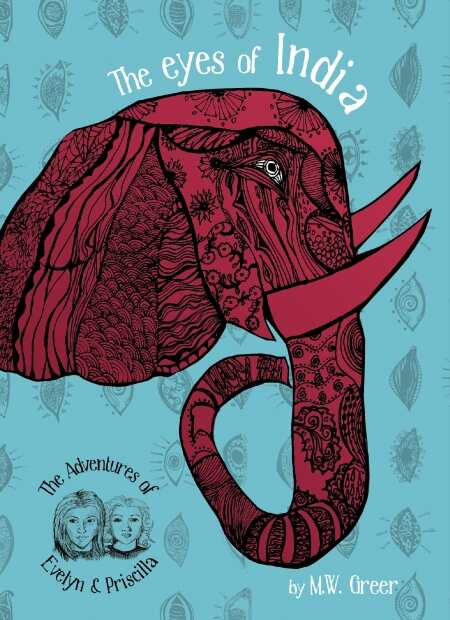
The Eyes of India
The one-of-a-kind illustrations and exotic setting of this adventure emphasize subtle messages about death and intuition.
Featuring unique, multi-patterned graphic illustrations produced in part by middle-school students, The Eyes of India follows two young girls as they travel down the Ganges River in India. Though the secondary characters sometimes fall flat, this middle-grade novel is filled with thoughtful messages about life and death.
Sisters Evelyn and Priscilla are living in India with their travel writer parents when they get the news that their uncle has died. Evelyn and Priscilla’s parents, who were on a trip, arrange for the girls to travel with a tour group and meet them in Varanasi, an Indian city that sits along the sacred Ganges River. However, the girls quickly get separated from the group and are soon lost in the jungle. As they battle monkeys and mosquitoes, the girls meet a series of people who guide them down the Ganges and into the city while also teaching them valuable lessons.
With a vivid setting, adventurous plot, and meaningful messages, The Eyes of India has a lot to offer middle-grade readers. M. W. Greer writes with full description, making it easy for readers to experience the bat-filled caves, dancing snakes, and somber funeral rituals. Although enjoying the plot requires more than a little suspension of disbelief, the story moves quickly and readers will be anxious to see what happens to the two sisters.
Much of the emphasis of the work seems to be on the sometimes subtle, deeper messages of the story. The idea of the life cycle and coping with fears is prevalent throughout the whole book, from the way the girls learn to deal with the relentless mosquitoes to the metaphor of a sari as a body. The concept of the “third eye” and the importance of following your intuition are also touched upon, if not fully explored.
The larger narrative framework is of an adult Evelyn relaying the story to her grandchild Annie, who is mourning the death of her pet dog. Their conversations occasionally helps break down some of the more complicated ideas and restates them in a different context, which could be helpful.
The black and white animal pictures are photographs of murals created by fifth through eighth graders who were intentionally trying to capture what emotion the animals represent in the book. Knowing that other children helped create the striking animal illustrations may add a point of interest for readers. Also included are intermittent portraits of the characters that contrast well with the more wild look of the animals.
With subtle ideas and beautiful imagery, this debut offering from M. W. Greer promises to leave readers with thoughts to ponder.
Reviewed by
Alicia Sondhi
Disclosure: This article is not an endorsement, but a review. The publisher of this book provided free copies of the book to have their book reviewed by a professional reviewer. No fee was paid by the publisher for this review. Foreword Reviews only recommends books that we love. Foreword Magazine, Inc. is disclosing this in accordance with the Federal Trade Commission’s 16 CFR, Part 255.
